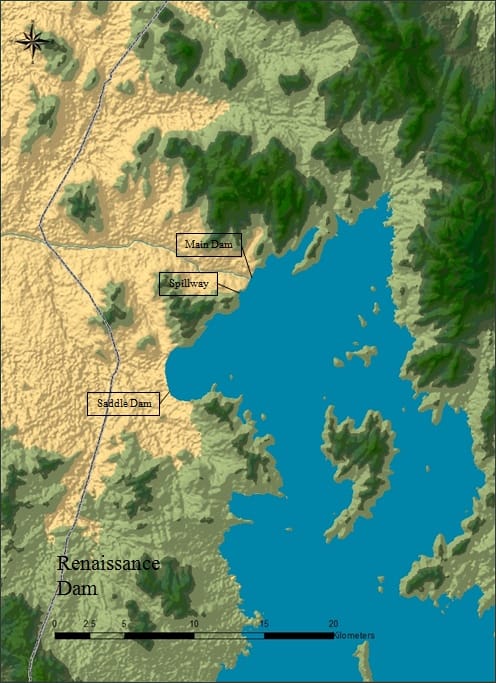Water Politics: Sharing the Nile

By Marie Vandermeulen, B.A. International Relations and Law
The Blue Nile river runs from Lake Tana in Ethiopia to meet the White Nile in Khartoum, before flowing north into Egypt. Since 2011, Ethiopia has worked to build one of its most extraordinary projects to date: the Grand Ethiopian Renaissance Dam (GERD). The electricity generated by the dam is a crucial lifeline, and promises to bring tens of millions out of poverty. To many Ethiopians, the dam is a glittering beacon of hope both for domestic use and international export, as well as a source of national pride.
Further north, Egyptian authorities are less than pleased about these development plans. More than 90% of Egypt’s water supply is reliant on the Nile, which includes drinking water, industrial use and irrigation. Egyptian farmers fear the effect of Ethiopia’s dam will mean the extinction of their already dwindling livelihood. Furthermore, Egypt’s own downstream Aswan High Dam could see a temporary 6% decrease in its hydroelectric capacity. For Egypt, the GERD is an existential threat to its economy and the water security of the country’s growing population. Not only are the socio-economic implications of the project troubling Egyptians, but many argue that its sovereignty on the Nile’s annual flow was actually established in the 1959 Nile Waters Agreement. These British colonial-era treaties established their power in the region, and Egyptians still consider the Nile’s waters as their birthright. Egypt’s Minister of Foreign Affairs, Sameh Shoukry, has been clear: should a water crisis occur, conflict will ensue.
Sudan has also expressed concern over the dam’s consequences. Geographically located between the two regional powerhouses, Sudan sides with Egypt, who have repeatedly insisted Ethiopia must not start filling the dam’s reservoir without first reaching a deal. The environmental ramifications for Sudan include worsened water shortages in an already drought-stricken region. The Sudanese people suffer from worsening conditions due to climate change and a renewed threat to its water resources will aggravate chronic water scarcity. Furthermore, Sudan’s rapid population growth and the highly unequal distribution of its water resources means that the country’s water security remains bleak. However, Sudan stands to benefit from the project through cheap electricity and reduced flooding. The nation has long attempted to keep a balance between Egypt and Ethiopia, and, many argue, has been left at the mercy of its neighbours’ quarrels.
“It is clear that in an era faced with the consequences of climate change, water will be the source of geopolitical tensions and crises.”
The start of the rainy season in Ethiopia began in June and lasted until September, effectively starting the filling of the GERD dam upon its completion this year. Years of negotiations have failed to produce a deal on how Ethiopia should fill and operate the dam, though the African Union and United Nations have tried to mediate talks, as did the US earlier this year. Most of the issues have been resolved, but the most important issue remains: how to handle the drought. It is clear that in an era faced with the consequences of climate change, water will remain to be the source of geopolitical tensions and crises.
Photo Caption: Map of Renaissance Dam and associated facilities. Credit: Rasta55; Underlying map: Courtesy NASA/JPL–Caltech.



